Des del campus
6. From campus
The Punktocrator, new guardian of the Dipòsit de les Aigües building
The most recent work to be included in the UPF Art Track tour, a street art mural by the artist Frank Trepax, uses one of the windows of the emblematic UPF building as a canvas. Alba Cros, a filmmaker and alumna of the bachelor’s degree programme in Audiovisual Communication, made a documentary about the creative process behind it.
UPF Art Track, the tour of the Ciutadella campus’s artistic and cultural heritage, has recently been enriched with a unique and different work. Over the course of two weeks, the artist Frank Trepax (the pseudonym of Francesc Punsola), painted the Punktocrator – as he defined it – using graffiti techniques, on the façade of the Dipòsit de les Aigües building overlooking the gardened area.
According to the artist, ‘The work takes street aesthetics to the solemn space of a university.’ He promised it would not leave anyone indifferent. ‘It is modern and stylish, with colours in synch with the surroundings.’
The work has literally been integrated into the UPF Art Track, as it is painted on a window of the iconic Dipòsit de les Aigües building, which is also a stop on the tour.
Trepax decided to paint the mural, which he did in March, in the open so that the university community could approach and interact with him as he worked. The filmmaker Alba Cros took advantage of this openness to create a documentary about the process of the mural’s creation.
Video summary of the opening ceremony of the Punktocrator
The technical summary of the work
-
Mural completely rendered in coloured spray paint and adhesive paper tape to separate the different colour areas.
-
The mural was painted on extra-strong outdoor plasterboard fitted to a metal frame.
-
The painted area spans approximately 16 square metres.
-
The empty spray-paint cans were turned into decorative metal rivets used to adorn the mural.
-
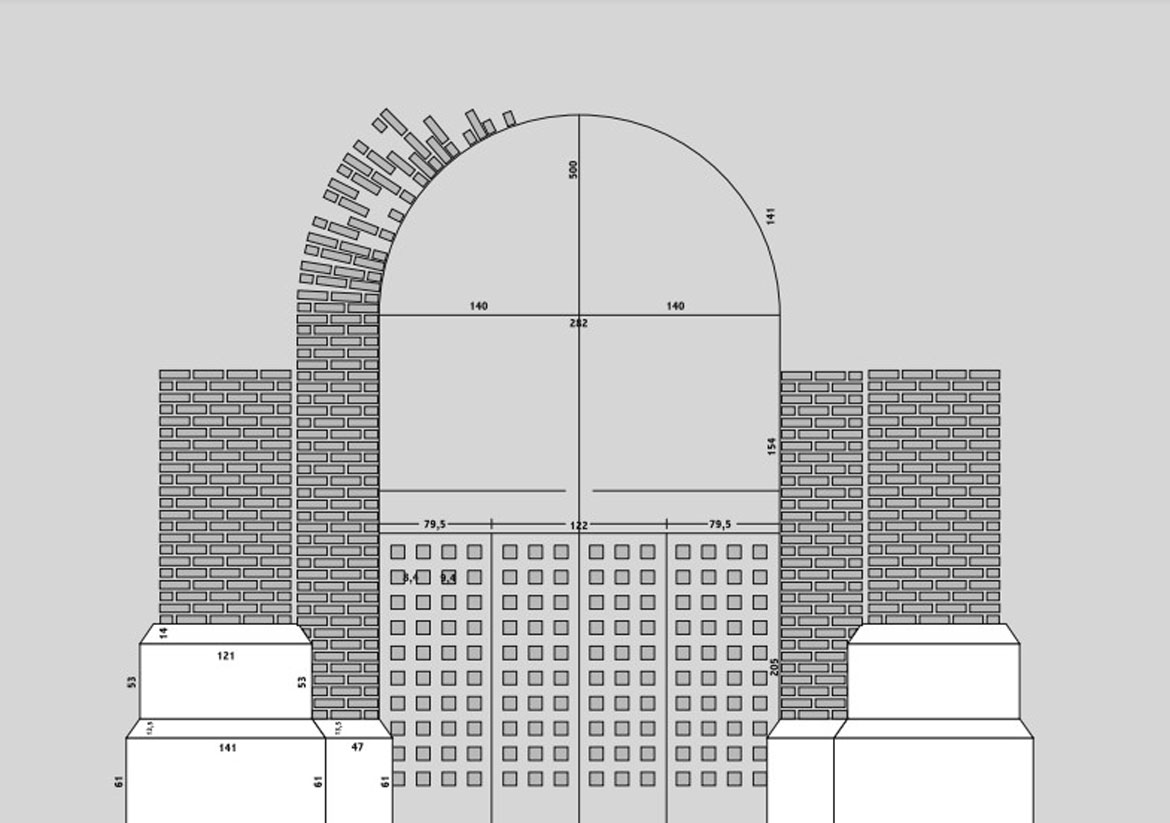
Reflections by Frank Trepax on what he wanted to convey with the work
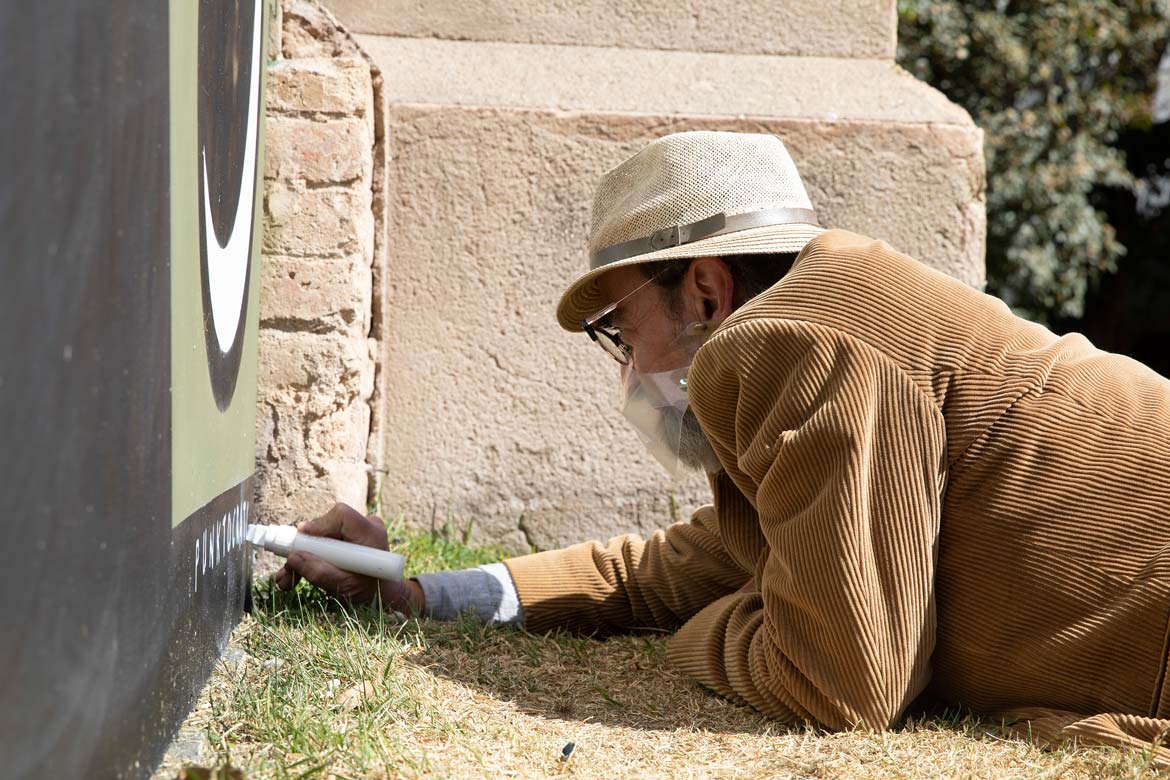
Curiously, this work had a name even before it took shape in my mind.
It was a strange and interesting play of ideas. We were visiting the site to see whether or not it was the best option. Javier Aparicio mentioned the shape of the arch and its proportions, which are reminiscent of, amongst other things, certain Renaissance altarpieces.
‘When I got to the Dipòsit building, the shape of the space spoke to me on its own. The delicate curve of the window evoked images from the Renaissance, Romanesque and Gothic periods, and suddenly everything came together. It was a quick process, without much mental speculation.’
Somehow, I was reminded of the frescoes of Romanesque churches dedicated to the Pantocrator, and, through a bit of word play based on an earlier work of mine that graphically depicted the passage of time from the Baroque period to the present day, the Pantocrator became the Punktocrator. At that exact moment, we all knew that this work, which had yet to be conceived, would depict the figure of a punktocrator. The contrast between the building’s solemnity and the title of the piece still makes me smile.
Over the following months, the Punktocrator gradually took shape in my mind as a figure clad in the solemn majesty of his surroundings and the temple of knowledge that is the building he watches over.
‘I used elegant colours from a soft palate, as I wanted to convey a feeling of relaxation, introspective contemplation, peace and serenity. Graphically, the result has been surprising.’
All the lines of the mural seek the face of the effigy, which is the work’s true nerve centre and which presents – in contrast to the rest of the figure and its clothing – multiple facets, as if they were the various faces of a stone or crystal cut to symbolize the diversity of knowledge, human thought and its ability to transform the individual.
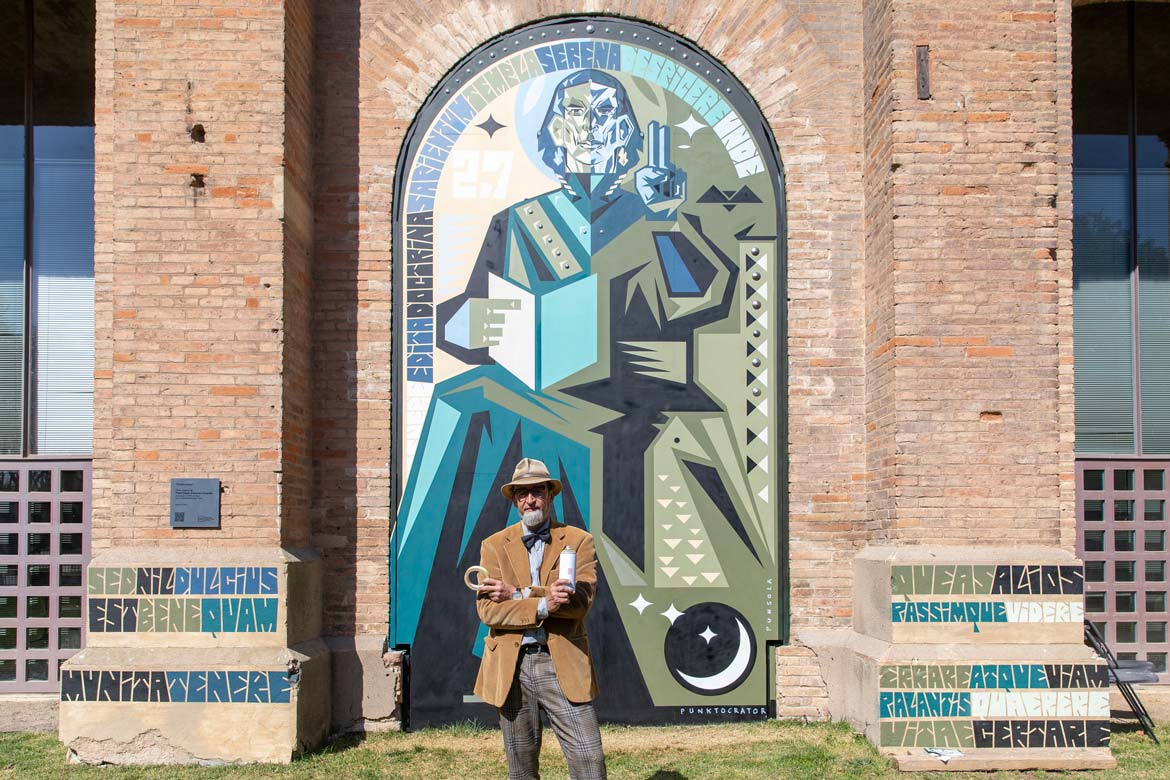
Once again, chance was key, bringing me the words of the Roman philosopher and poet Lucretius (Titus Lucretius Carus, 99 BCE-55 BCE), which I incorporated into the painting.
These inspiring words, from his poem De rerum natura (On the nature of things), helped me find the Punktocrator’s gaze and expression, consisting of the authority conferred by devotion to and the profundity of knowledge. They are as follows:
Sed nihil dulcius est, bene quam munita tenere
Edita doctrina sapientum templa serena,
Despicere unde queas alios passimque videre
Errare atque viam palantis quaerere vitae,
Which can be roughly translated as:
But nothing is more pleasing
than to dwell in the exalted temples
built on the quiet teachings of the wise,
from whose heights you can see others
and watch as they go astray,
wandering here and there in search of the road of life
The work and the artist seen through a different lens
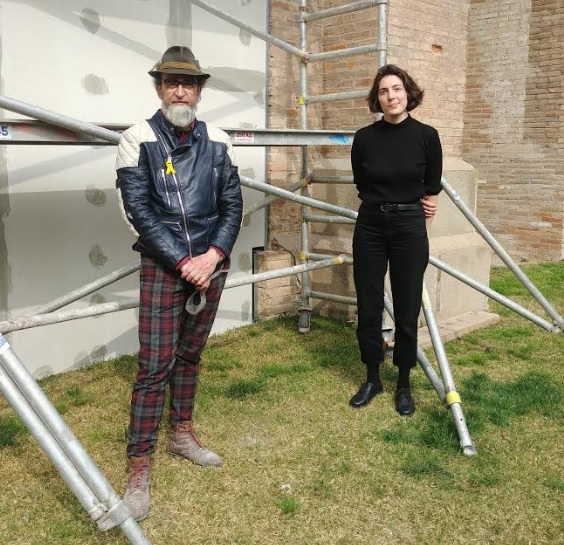
Against the background of the artist’s desire to approach the creative process in the open, a second work of art was created, in this case, a documentary, which engages in a dialogue with both the mural and the artist. Alba Cros, a filmmaker – Les amigues de l’Àgata (2015) – and alumna of UPF’s bachelor’s degree programme in Audiovisual Communication, observed Frank Trepax and the creation of the Punktocrator over the course of two weeks, emulating the spectator’s gaze. According to the director, ‘The documentary will be a lot like Víctor Erice’s El sol del membrillo, which served as a reference for me as I followed the process. Also, Alan Cavallier, who filmed people performing their trades.’ She added, ‘It will be like watching how this whole wall – with all its details and the artist’s micro-thoughts and silences as he stood before it – was built.’
The documentary will seek to portray the mural’s growth without any foreknowledge of the final result, trying to imagine how it will turn out. According to Manel Jiménez, vice-rector of Educational Transformation, Culture and Communication, ‘Our idea, when we decided to accompany the Punktocrator with another work, was precisely to take the measure of the work being created, but from another discipline, from another perspective that was not immediate, but rather would contribute a new discourse to the work already underway.’
This second creative proposal perfectly exemplifies the UPF Culture Programme, a project created from, by and for the university that also reaches out to the world. The university thus seeks to contribute to social change through culture, as well, on the understanding that its natural activity as a hub of knowledge gives rise to numerous initiatives that go beyond the academic realm and offer mechanisms for improving the world around it.
The artist: Frank Trepax, a pioneer of graffiti and urban art
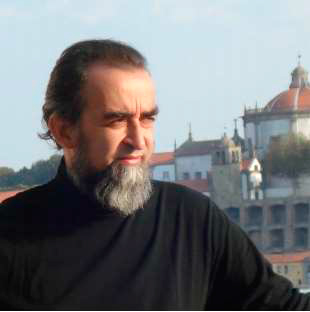
Frank Trepax, the pseudonym of Francesc Punsola, is one of Spain’s pioneering artists in the world of street art, especially in Barcelona. He got his start in the mid-1980s, when, along with the Trepax collective, he began to paint his ephemeral works on the walls of the Catalan capital.
In 1986, he enrolled at Escola Massana in Barcelona. That first academic year, which covered various branches of art, he learnt the stencilling and spray-paint technique in a class exercise. Along with some of his classmates, Frank decided to put this technique into practice.
Although he initially had to paint out of view of the police, who pursued graffiti artists for acts of vandalism, the style’s gradual integration into the urban imaginary eventually made it easier for the authorities to realize the value of his creations. As a result, in 1988, he participated in the creation of the first mural authorized by the Barcelona City Council, on a wall on Carrer Jaén in Gràcia, dubbed SafariSprai, which today no longer exists.
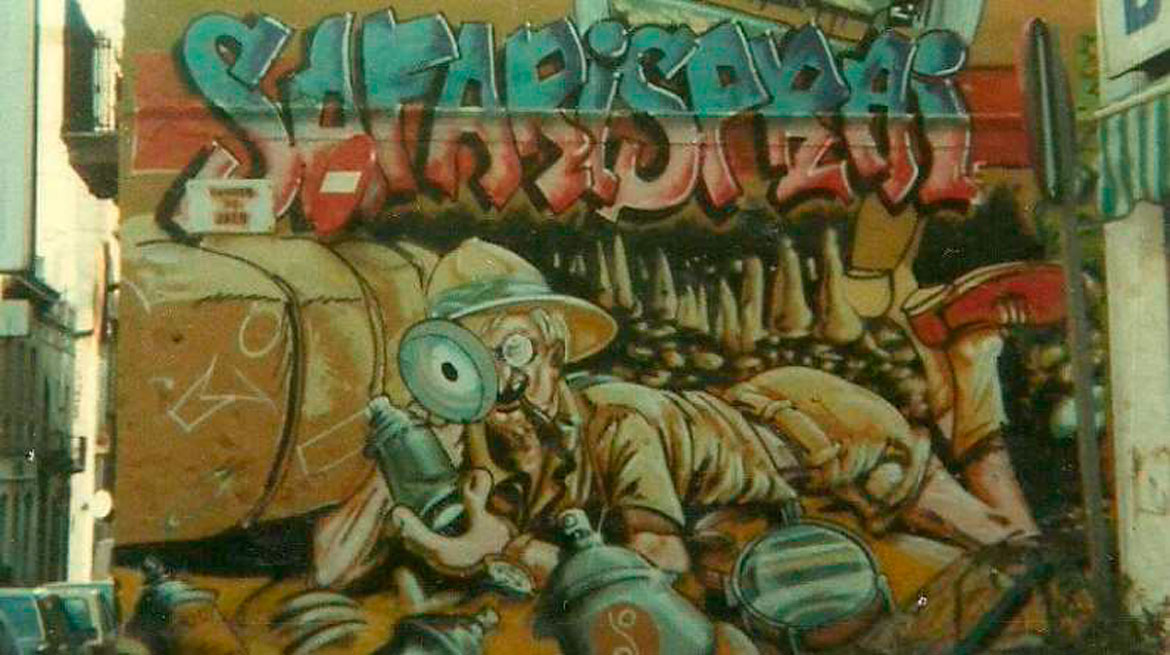
Frank Trepax is also an all-around artist. In addition to his work as a street artist, he has met with great success as an illustrator for all kinds of formats: advertising campaigns, book and album covers, pictograms for public venues, etc. Recently, he has focused on the relationship between art and nature, creating ephemeral, large-scale forms on the beaches of the Baix Maresme region and sculpting engravings in stones in various forests throughout Catalonia.
